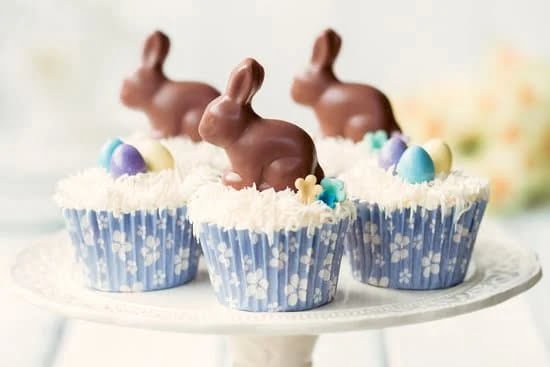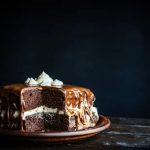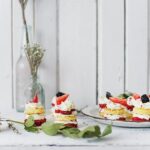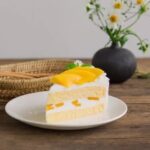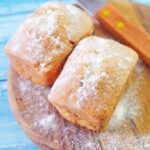Cake decorating has long been admired for its ability to turn ordinary baked goods into extraordinary masterpieces. Over the years, this culinary art has continued to evolve, and one aspect that has gained immense popularity is cake decorating piping patterns. From elegant swirls and delicate rosettes to intricate lace designs and whimsical shapes, piping patterns are a cornerstone of cake decoration that elevate cakes from simple desserts to works of edible art.
In recent years, the trend of cake decorating has grown exponentially, with enthusiasts around the world embracing this creative outlet. What used to be a mere hobby has now become a form of self-expression and an impressive skill showcased at birthdays, weddings, and other special occasions.
As individuals seek unique ways to personalize their celebrations, cake decorators have risen to the challenge by pushing boundaries and exploring innovative techniques – with piping patterns playing a pivotal role in these artistic creations.
Piping patterns are not just aesthetically pleasing; each pattern serves a purpose in adding texture or definition to a cake’s design. Whether it’s using buttercream or royal icing, decorators carefully pipe different patterns onto cakes using various tips and techniques. These patterns can range from classic borders to elaborate floral arrangements or even intricate lacework.
They can transform a plain sheet cake into an enchanting wonderland or bring whimsy and charm to cookies and cupcakes. In essence, mastering quality piping skills is essential for any cake decorator looking to create captivating designs that leave an impression on clients and guests alike.
As the demand for cake decorating continues to grow, aspiring decorators have found solace in online platforms such as YouTube that offer an abundance of tutorials catering specifically to those interested in learning about piping patterns. The variety of dedicated channels on YouTube provides extensive resources for beginners looking for step-by-step instructions as well as more advanced decorators seeking inspiration for complex designs.
With detailed visuals aids coupled with clear explanations, these channels have become an invaluable tool for cake enthusiasts in honing their skills and taking their piping patterns to new heights.
Understanding Piping Patterns
Piping patterns are a fundamental aspect of cake decorating, playing a crucial role in creating beautifully designed and visually appealing cakes. These patterns are created by using various types of icing tips with different shapes and sizes to achieve specific designs. Whether you’re a beginner or an experienced cake decorator, understanding piping patterns is essential to elevate the overall aesthetics and charm of your cake creations.
There are several types of piping patterns that decorators can explore and utilize in their designs. Some popular ones include buttercream flowers, scrollwork, rosettes, lacework, basketweave, and drop strings. Each pattern has its unique purpose and application; for example, buttercream flowers can add a touch of elegance and whimsy to wedding cakes, while scrollwork can bring a classic and intricate look to any design.
To master these piping patterns, it’s important to have a good grasp of the basic techniques involved. This includes the correct pressure on the piping bag for consistent control over the flow of icing, maintaining even spacing between each piped element when creating repetitive designs, and ensuring smooth lines or shapes when doing intricate scrollwork or lacework.
For beginners looking to dive into the world of cake decorating piping patterns, there are some essential tools and materials needed. These include piping bags (preferably reusable), couplers (to easily change tips), various types of icing tips (such as round tips for dots or writing, star-shaped tips for rosettes or shells), an offset spatula (for spreading buttercream or smoothing surfaces), and food coloring gels (to achieve vibrant colors).
To avoid feeling overwhelmed when starting out with piping patterns learning resources such as Youtube channels dedicated to cake decorating can be immensely helpful. Here are some top cake decorating channels on Youtube that offer engaging tutorials:
1. “How To Cake It” – Hosted by Yolanda Gampp 2. “Rosie’s Dessert Spot” – Hosted by Rosie These channels provide step-by-step instructions, clear demonstrations, and helpful tips for beginners to get started with piping patterns. The hosts also share their personal experiences and insights, making the learning process enjoyable and interactive.
Understanding piping patterns is not only about mastering techniques but also about nurturing creativity. These patterns provide a canvas for cake decorators to express themselves artistically and create cakes that are both visually stunning and delicious. So dive into the exciting world of cake decorating piping patterns and unlock your imagination on Youtube.
Exploring the Wide World of Cake Decorating Channels on Youtube
The popularity of cake decorating has skyrocketed in recent years, and one of the main reasons for this is the wealth of resources available on platforms like YouTube. With thousands of channels dedicated to cake decorating, specifically piping patterns, aspiring decorators have access to a vast selection of tutorials and inspiration. Whether you’re a beginner looking to learn the basics or an ambitious decorator aiming to level up your skills, there’s a YouTube channel out there for you.
One highly recommended cake decorating channel on YouTube is “Cake Decorating with Jenny.” Jenny’s channel offers engaging and effective tutorials that cater to decorators of all levels. She covers a wide range of topics, from beginner piping patterns to advanced techniques like gravity-defying designs. With clear visual aids and step-by-step instructions, even beginners can easily follow along and create stunning cakes.
For those seeking more advanced techniques and inspiration, “The Icing Artist” is another excellent YouTube channel to explore. Hosting exciting challenges and creating intricate designs, this channel demonstrates how piping patterns can truly transform a cake into a work of art. From floral bouquets to elegant lace designs, The Icing Artist showcases the endless possibilities that can be achieved through piping.
Not only do these channels provide valuable knowledge and guidance, but they also introduce viewers to the creativity, skill, and artistry behind professionally decorated cakes using various piping patterns. By watching these tutorials and studying real-life examples of beautifully decorated cakes on YouTube, decorators gain inspiration and motivation to experiment with their own creations.
So why wait? Head over to YouTube today and start exploring the wide world of cake decorating channels-unleash your creativity with piping patterns. Whether you’re a beginner or an experienced decorator, these videos will offer valuable tips, techniques, and plenty of inspiration to get you started on your cake decorating journey.
Remember that practice makes perfect; keep experimenting with new piping patterns as you continue honing your skills. With patience and determination, you’ll soon be creating stunning cakes that are sure to impress.
Mastering Beginner Piping Patterns
Cake decorating is a truly mesmerizing artform that allows individuals to transform simple cakes into stunning works of art. Piping patterns, in particular, play a crucial role in achieving those beautifully decorated cakes that we often admire.
Whether you’re a beginner or looking to expand your cake decorating skills, mastering piping patterns is an essential step on your journey. In this section, we will provide you with a step-by-step guide on how to create basic piping patterns for beginners.
Essential Tools and Materials
Before we dive into the actual techniques, it’s important to gather the necessary tools and materials. To get started with piping patterns, you will need a few essentials:
- Piping Bags: These are cone-shaped bags made of fabric or plastic that hold your icing or buttercream.
- Piping Tips: These metal nozzles fit onto the end of your piping bag and shape the pattern you want to create.
- Couplers: These allow easy changing of piping tips without having to change the entire bag.
- Icing Spatula: This long, flat utensil helps spread icing smoothly on the surface of the cake before applying any piped designs.
- Practice Board or Cake Dummy: To perfect your piping skills, it’s useful to practice on a flat surface such as a practice board or cake dummy.
Basic Piping Techniques
Now that you have gathered all the necessary tools and materials let’s dive into some basic piping techniques for beginners:
- Outlining: Start by attaching a round tip onto your piping bag and fill it with icing. Apply gentle pressure to create outlines along the edges of your cake layers or specific areas where you want to accentuate shapes.
- Filling In: Swap out the round tip for a star tip if you want to create a filling effect. Hold the tip slightly above the cake’s surface and apply pressure while moving your wrist in a circular or zigzag motion to completely cover the desired area.
- Dots and Beads: A simple yet effective technique is to create dots or beads on your cake. Using a round tip, apply quick and gentle pressure to release small amounts of icing onto the cake surface.
Visual Aids and Practice
To assist you in learning these beginner piping patterns, we recommend utilizing visual aids such as online tutorials or books dedicated to cake decorating. Many Youtube channels offer step-by-step demonstrations for beginners, which can be extremely helpful in understanding the techniques involved. Additionally, practicing these piping patterns on a practice board or cake dummy before attempting them on an actual cake will build your confidence and precision.
By mastering these basic piping patterns, you are laying a strong foundation for your future endeavors in cake decorating. Remember to be patient with yourself as it takes time and practice to perfect these skills. In the next section, we will explore intermediate piping patterns for those ready to tackle more intricate designs.
Leveling Up
Introduction to Intermediate Piping Patterns
Once you’ve mastered the basics of piping patterns, it’s time to take your cake decorating skills to the next level. Intermediate piping patterns offer a new level of challenge and opportunity for creative expression. These intricate patterns will impress your friends, family, and clients with their complexity and beauty. In this section, we will explore some intermediate piping patterns that will elevate your cake decorating game.
Perfecting Complex Techniques
As you venture into intermediate piping patterns, it’s important to approach them with patience and practice. These designs often require a steady hand and a deep understanding of piping techniques. One popular intermediate pattern is the lattice design, which involves creating an interconnecting grid-like pattern on the cake surface using royal icing or buttercream frosting.
Another challenging but stunning technique is the brushstroke effect. This technique involves using a flat-tipped brush to create realistic-looking brushstrokes in various colors on the cake. It adds depth and texture to any design, making it an impressive addition to your repertoire.
Resources for Intermediate Piping Patterns
To enhance your learning experience and gain inspiration, there are several Youtube channels dedicated to teaching intermediate piping patterns. For example, “Cake Decor Masterclass” offers in-depth tutorials on various complex designs, from delicate lace patterns to intricate floral arrangements.
Another valuable resource is “The Piping Academy,” where renowned cake decorators share their expertise in advanced techniques like stringwork and filigree piping. These channels provide step-by-step instructions along with helpful tips and tricks for mastering intermediate piping patterns.
By exploring these resources and investing time in practice, you can elevate your skills as a cake decorator and create show-stopping cakes that leave a lasting impression on any occasion.
Remember, mastering intermediate piping patterns takes time and dedication – don’t get discouraged if it doesn’t come out perfectly at first. With perseverance and the guidance provided by Youtube channels, you’ll soon be creating jaw-dropping designs that will surely impress.
Showcasing Stunning Piping Patterns
Cake decorating is not just about creating a delicious treat, but also about transforming it into a work of art. Piping patterns are a key element in achieving visually stunning and eye-catching designs that captivate the senses. In this section, we will showcase some truly mesmerizing examples of professionally decorated cakes using various piping patterns.
One example of a breathtaking cake design is the use of rosettes. By creating delicate swirls with buttercream or royal icing, decorators can create beautiful flower-like patterns that add an elegant touch to any cake. This technique is often used for wedding cakes or formal events where a touch of sophistication is desired.
Another impressive piping pattern involves the creation of latticework on a cake. This intricate technique requires steady hands and precision, as decorators carefully pipe lines in a crisscross pattern to form a visually striking lattice design. It serves as the perfect canvas for embellishments such as sugar flowers or edible pearls, adding depth and texture to the overall cake design.
For those looking for something more whimsical and playful, novelty piping patterns are always a hit. From animal-shaped decorations to intricate scenes from popular movies or cartoon characters, these designs allow decorators to let their imagination run wild. The use of vibrant colors and attention to detail make these cakes truly showstopping centerpieces at any event.
The artistry behind these stunning creations showcases the endless possibilities that piping patterns offer in cake decorating. Whether you are an amateur baker looking to improve your skills or a professional decorator seeking inspiration, exploring real-life examples can ignite your creativity and motivate you to push boundaries when it comes to designing unique cakes.
Troubleshooting Common Piping Pattern Mistakes
When it comes to cake decorating, piping patterns can be both a joy and a challenge. While they have the potential to elevate the overall design of a cake, it’s not uncommon for decorators to encounter common mistakes along the way. In this section, we will explore some of the most common piping pattern mistakes and provide expert advice and solutions to overcome them.
One common mistake that beginner decorators often make is inconsistent pressure when piping. This can result in uneven lines or varying thicknesses in the design. To avoid this, it’s essential to maintain steady and consistent pressure on the piping bag throughout the process. Practicing with different levels of pressure before starting on your cake can help you find the right balance.
Another issue that decorators may face is the difficulty in creating smooth, straight lines when using piping bags. Uneven or wobbly lines can significantly affect the overall appearance of a design. One solution to this problem is to use a guideline before piping. You can achieve this by lightly marking your desired line on the cake with a toothpick or small knife, providing a clear path for your piping bag.
A common challenge that decorators encounter when working with intricate piping patterns is icing consistency. If your icing is too soft or too stiff, it can make detailed work difficult or even impossible. To avoid this, ensure that your icing has the right consistency by following the recipe closely and making any necessary adjustments as needed.
Here are some additional tips for troubleshooting other common mistakes when using piping patterns:
- If your lines look jagged or messy, try adjusting your grip on the piping bag for better control.
- To prevent air bubbles from forming in your piped designs, gently tap the piped areas with a toothpick or small brush.
- If you find that your designs are smudging or blending together, make sure to let each section dry completely before moving on to the next.
By being aware of these common mistakes and using the expert advice provided, you’ll be better equipped to overcome any challenges you may face when working with piping patterns. Remember, practice makes perfect, so don’t be discouraged if your first attempts aren’t flawless. With time and dedication, you’ll master the art of cake decorating and create stunning designs.
The Future of Cake Decorating
The art of cake decorating is constantly evolving, with new innovations and trends emerging all the time. Piping patterns, in particular, are an area that has seen significant growth and development. As technology advances and cake decorators push the boundaries of creativity, the future of piping patterns holds exciting possibilities.
One of the emerging trends in cake decorating is the use of 3D printing technology to create intricate piping designs. With a 3D printer, decorators can bring their imagined patterns to life with precision and accuracy. This opens up a whole new world of possibilities for creating unique and detailed designs that were once impossible or extremely time-consuming to achieve by hand.
Another trend in piping patterns is the fusion of traditional techniques with modern elements. Cake decorators are incorporating unconventional materials such as edible sugar sheets, wafer paper, or even metallic accents into their piping designs. This combination of traditional piping skills with contemporary elements adds depth and visual interest to cakes, elevating them to works of art.
Furthermore, there has been a growing focus on sustainability in cake decorating. Many decorators are now opting for environmentally friendly piping materials such as reusable silicone piping bags instead of disposable plastic ones. Additionally, there is an increased emphasis on using natural food coloring made from plant-based ingredients instead of artificial dyes.
| Innovations | Trends |
|---|---|
| 3D printing technology | Fusion of traditional techniques with modern elements |
| Environmentally friendly materials | Natural food coloring |
As cake decorating continues to evolve, it is crucial for decorators to stay updated with these innovations and trends. Luckily, Youtube remains an invaluable resource for accessing tutorials and demonstrations on the latest piping pattern techniques. There are numerous channels dedicated to showcasing and teaching these new trends, ensuring decorators have the knowledge and skills to stay ahead of the curve.
Conclusion
In conclusion, cake decorating piping patterns offer endless possibilities for creating visually stunning and eye-catching designs. Whether you are a beginner looking to learn the basics or an ambitious decorator seeking more complex techniques, Youtube is a valuable resource for mastering the art of cake decorating. The vast selection of cake decorating channels dedicated to piping patterns provides engaging and effective tutorials, making it easier than ever to unleash your creativity in the world of cake decorating.
Utilizing Youtube as a learning tool allows decorators to access step-by-step guides, essential tools, and visual aids that can assist in understanding and perfecting piping techniques. From mastering basic patterns to tackling intermediate designs, there is a tutorial out there suited for everyone’s skill level. By exploring these tutorials, decorators can not only enhance their abilities but also stay up-to-date with emerging trends and new technologies shaping the future of cake decorating.
So why wait? Unleash your creativity and dive into the exciting world of cake decorating using piping patterns found on Youtube. With dedication and practice, you have the power to create beautiful cakes that will amaze both family and friends.
Embrace your passion for cake decoration and let your imagination run wild as you experiment with various piping patterns and techniques. So go ahead, grab your icing bag, browse the vast collection of tutorials on Youtube, and watch as your skills blossom alongside your beautifully decorated cakes.
Frequently Asked Questions
How do you pipe buttercream icing on a cake?
Piping buttercream icing on a cake involves using a piping bag fitted with a desired tip and filled with the buttercream. To begin, hold the piping bag with your dominant hand, ensuring a tight grip to have full control over the flow of icing. Apply gentle pressure to the top of the bag while guiding it in smooth motions across the surface of the cake.
It is important to maintain a consistent pressure throughout to achieve an even flow of icing. The angle at which you hold the piping bag will determine the shape and design of the buttercream pattern on the cake. Practice different techniques such as rosettes, stars, or simple swirls to create various decorative effects.
How do you pipe the top of a cake?
Piping the top of a cake is similar to piping buttercream icing on any other part of the cake. Start by holding the piping bag perpendicular to the surface of the cake, slightly above it.
Apply steady pressure on the bag while moving it in circular or back-and-forth motions to create a pleasing pattern on top of the cake. You can use various tips to achieve different textures and designs, such as star-shaped tips for rosette patterns or round tips for smooth borders and writing.
What are the piping techniques?
There are several piping techniques used in cake decorating:

Welcome to our cake decorating blog! My name is Destiny Flores, and I am the proud owner of a cake decorating business named Cake Karma. Our mission is to provide delicious, beautiful cakes for all occasions. We specialize in creating custom cakes that are tailored specifically to each customer’s individual needs and tastes.

